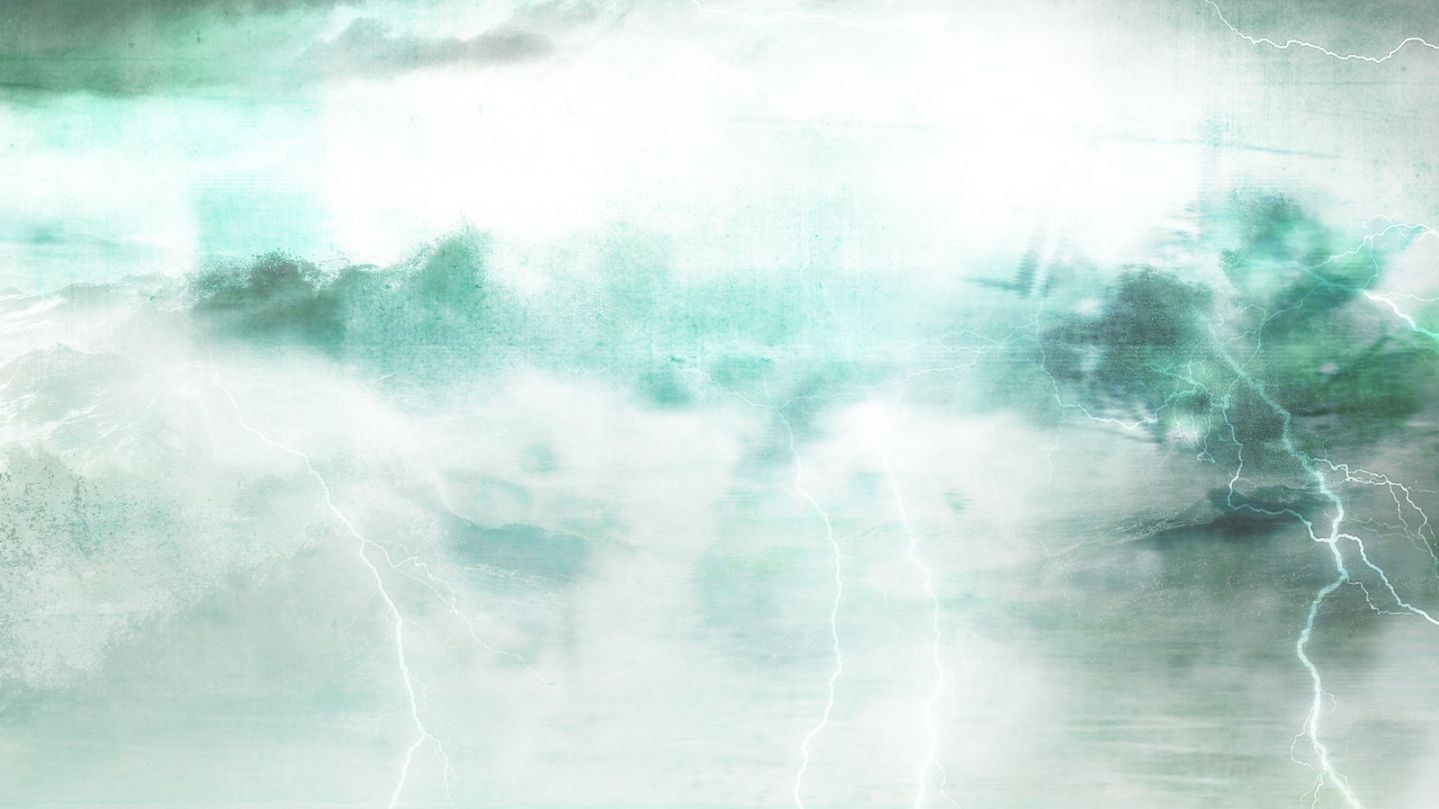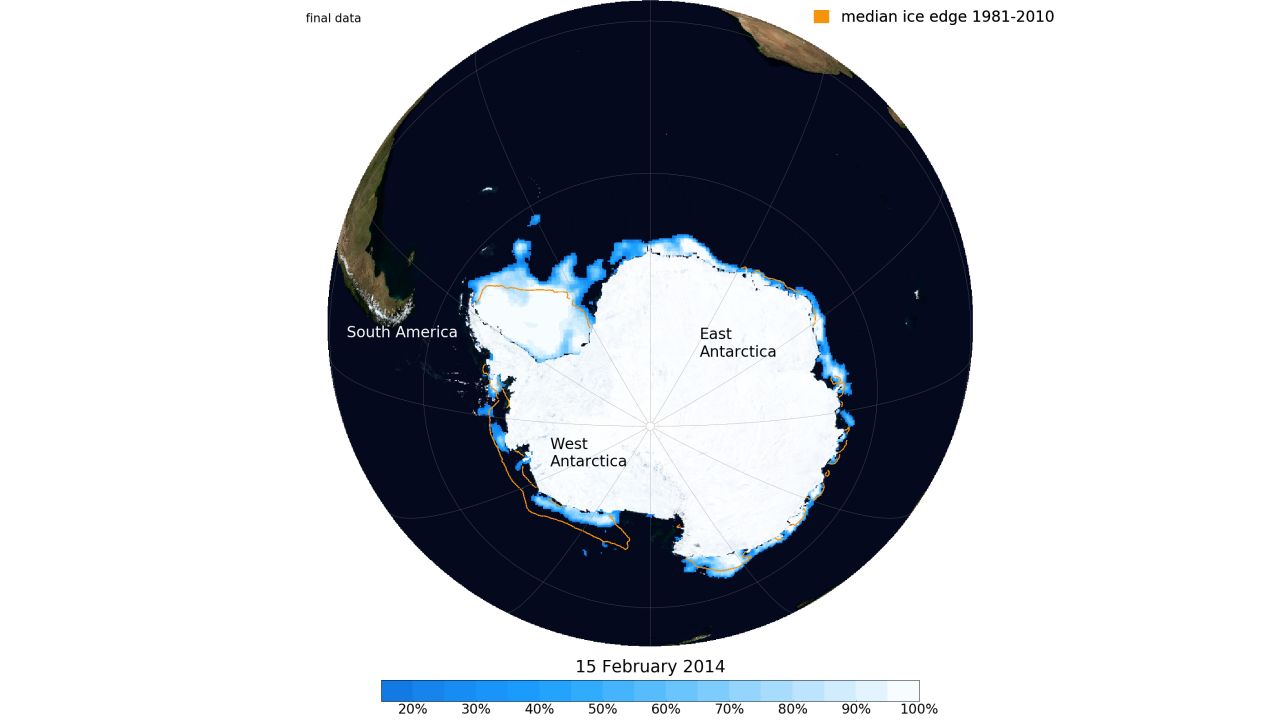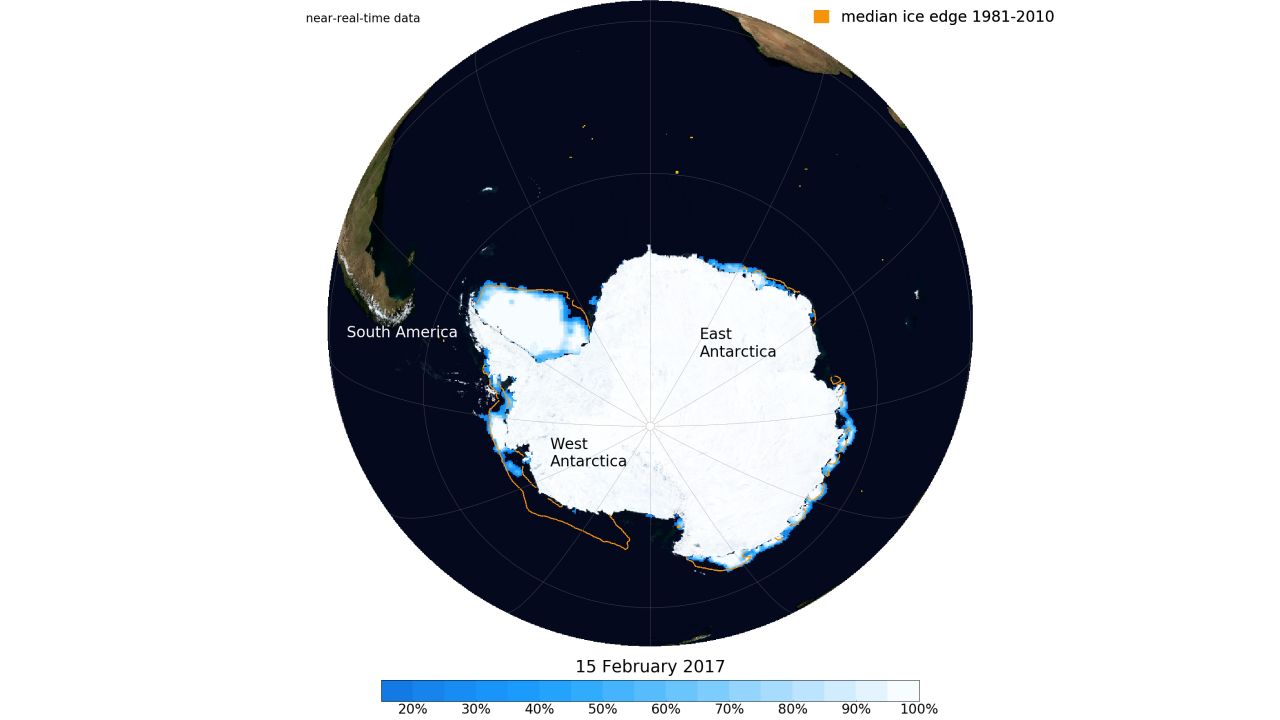Story highlights
The area covered by Antarctic sea ice reached a record low this week
Antarctica's sea ice was at record high levels less than three years ago
There is currently less sea ice surrounding the Antarctic continent than at any point since reliable records began in 1979.
“As of Tuesday, it looks like we hit a new record low in the satellite era,” Mark Serreze, the director of the National Snow and Ice Data Center, said.
It wasn’t too long ago – less than 3 years to be exact – that Antarctica was in a multiyear stretch of record highs for sea ice.
This fact was frequently trumpeted by climate change skeptics as evidence against global warming.
Using the Antarctic sea ice maximum as “evidence” to counter the realities of climate change might always have been considered “thin,” but that argument has now melted away.
The rapid decline, from record high extents of sea ice, to current record lows has been startling.
“It has certainly caught our attention,” says Serreze.
According to Eric Rignot, a senior research scientist at the Jet Propulsion Laboratory in Pasadena, California, “the changes in sea ice in the Antarctic are amazing.” Along with the Antarctic, we are simultaneously seeing record low sea ice in the Arctic, which Rignot characterized as “mind-boggling.”
When you combine both of these results, he said, “they illustrate in a spectacular manner how fast our planet has been warming up in recent decades.”
Not necessarily climate change
The current record minimum in sea ice on its own does not provide “very credible evidence for global warming” according to Walt Meier, a research scientist with the Cryospheric Sciences Laboratory at NASA’s Goddard Space Flight Center, who has tracked sea ice data going back to 1979.
Meier points out that Antarctic sea ice is extremely variable.
“It has a much higher seasonal variability (change from min to max) than the Arctic,” he said.
Since Antarctic sea ice is basically in a ring around the continent, it is exposed to open ocean on its edges and vulnerable to rapidly changing ocean and wind conditions. Meier believes that it is the changes in winds in particular that are the main driver behind the recent collapse in sea ice cover in Antarctica.
“I think a big factor is the Southern Annular Mode,” Meier said, “(which) is a cyclical oscillation in the atmospheric circulation pattern, akin to the El Niño cycle … it’s an indication of how strongly the winds blow around the Antarctic continent.”
For much of the past several years this pattern has been in a positive phase, which is conducive to winds that promote ice growth.
“But towards the end of 2016, it shifted negative,” according to Meier, which resulted in winds blowing from the north that restrict ice extent.
Warmer ocean temperatures
Warmer ocean temperatures could also be playing a role in the lessening ice, something that scientists have been warning about for years. Warmer ocean temperatures, resulting from both natural variability and man-made climate change, are likely eroding Antarctic sea ice and land ice, such as glaciers, from the bottom and could eventually lead to sea level rises up to 6 feet.
The strange, shifting world of Antarctica
Meier believes that global climate change will lead to a decrease in the sea ice in Antarctica, but since there is so much natural variability, it will likely take many more years before we can see the trend for sure.
“We do expect to see Antarctic sea ice decrease over the long term in response to warming, but there is so much variation naturally that it may still be a while before a warming signal shows up outside of the noise of natural variations.”
Have we reached the bottom?
Though 2017 has already seen sea ice reach the lowest extent on record, we likely have not yet hit the bottom. Sea ice in the Antarctic does not normally reach its minimum extent until later in February.
Join the conversation
Athena Dinar, communications manager for the British Antarctic Survey, acknowledged this years’ ice loss in the Antarctic, and said more loss is likely.
“The low levels of sea ice have been reached due to the near total loss of sea ice in Ross Sea and Amundsen Sea, which occurred in January.”
We have seen the ice continue to decrease this week, even since the minimum record was reached according to Dinar, and “it is likely we will see further retreat over the next few weeks.”
CNN Meteorologist Judson Jones contributed to this report.





















